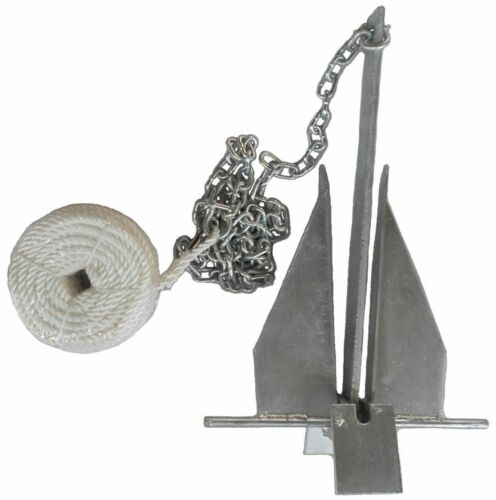Rumored Buzz on Fluke Style Anchor
Wiki Article
About Fluke Style Anchor
Table of ContentsFluke Style Anchor Can Be Fun For EveryoneAn Unbiased View of Fluke Style AnchorAn Unbiased View of Fluke Style AnchorFluke Style Anchor for Beginners
Claw supports are easier to establish, much less likely to foul, and easier to reset if they drag. However, they do not give as much holding power as a fluke-style support. Plow-style anchors are the most typical kind of anchor utilized on small to medium-sized boats. They are very easy to release and get as well as offer excellent holding power in most problems.They are a lot more reliable at embeding in soft bases, as well as they have a greater holding power-to-weight ratio. Mushroom supports are the largest as well as heaviest kind of anchor, as well as they are commonly made use of on big watercrafts or in deep water. They have the highest holding power of any type of type of support, however they can be challenging to release as well as fetch.
It is designed to penetrate the sea flooring and also give a protected hold for your boat. Fluke anchors are usually made of top notch products such as galvanized steel as well as are construct to last. Fluke support dragging can be a discouraging trouble for seafarers. This kind of dragging occurs when the anchor line ends up being tangled around the anchor's flukes, stopping it from establishing appropriately.
This device attaches to the support line and also stops it from turning. One more alternative is to make use of a longer anchor line. This will offer the support more area to establish appropriately and also will minimize the opportunities of the line ending up being tangled. Check the rode to ensure it is not fouled or entangled.
Little Known Facts About Fluke Style Anchor.
Inspect the support itself to see if it is damaged or if the flukes are not dug in properly. If so, attempt resetting the support. If all else fails, you can try relocating the watercraft to a different place.This layout allows for an appropriate setup no issue the angle the anchor lands. When selecting your next anchor visit us below at Wholesale Marine.
By Tom Concern, Last updated: 5/28/2020 Anchor rodes contain a length of chain, rope or a combination of rope as well as chain that attaches a support to a watercraft. The rope section of support rodes typically is composed of nylon three-strand, 12-strand or double-braid line. Nylon is the material of choice, due to the fact that it is elastic and able to absorb the shock tons came across when securing - Fluke Style Anchor.
Several small boats make use of anchor rodes made totally of three-strand nylon line. This is because all-rope rodes are light-weight, affordable as well as easier to stow than rope-chain or all-chain rodes. All-rope rodes can be quite solid, they do not have the chafe resistance of chain as well as are therefore not appropriate for anchoring near reefs, amongst rocks or in anchorages with whole lots of surge as well as wave activity.
Things about Fluke Style Anchor

This minimizes the demand for lengthy scope (except in superficial water) because the chain is heavy as well as rests on all-time low till serious conditions are come across, when even more range might be called for. Because chain has extremely little elasticity, treatment must be required to prevent the chain from becoming "bar limited" in high winds by utilizing a snubber made from nylon line.
It find more is fairly light (as low as 65 pound.) as well as tremendously strong. Grade 43, called G4 or HT; made from high-carbon steel. Find Out More G4 is the preferred chain for anchoring or windlass applications, and has twice the working tons of BBB chain, so you can make use of a smaller sized dimension with the very same strength.
BBB or "Three-way B" has a consistent pitch short web link, and also works well on windlass gypsies. BBB used to be one of the most popular kind for windlass layouts of the past, but has been replaced by G4. Proof Coil does not have a consistent pitch and also does not collaborate with anchor windlasses.
Facts About Fluke Style Anchor Uncovered
Small galvanized shackles connect the support to the size of chain, and also connect the chain to the thimble on the support line. Fluke Style Anchor. Remember to use the "following measure" in shackles; a size of 1/4" chain would be matched to a 5/16" bind. This system, with a lengthy length of three-strand nylon line, a modest length of chain and a correctly sized anchor will certainly please the requirements of the bulk of sailors, with watercrafts as much as the 30' dimension variety.
High-strength chain like these allows you to decrease a size which lowers the chain's weight by concerning 30%, while accomplishing the very same functioning tons ability as well as supreme toughness. Matching anchor chain to a particular vessel can be tough, given that the windage of the vessel is possibly the essential option aspect, as well as windage is hard to determine.
Report this wiki page